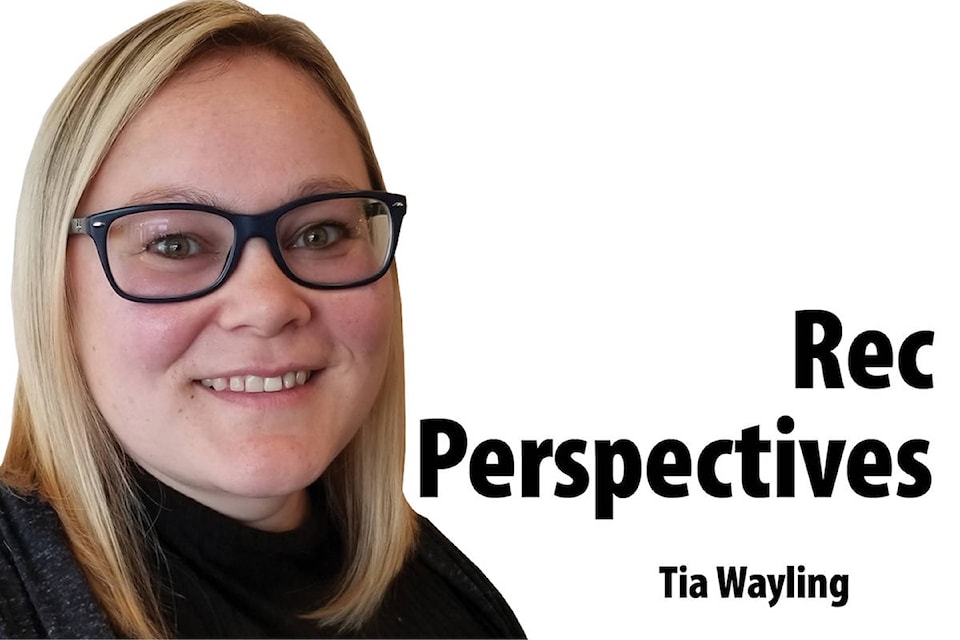“Rec Perspectives” with Tia Wayling, the recreation services coordinator with the Regional District of Central Kootenay
Back in February, I provided you with the history of the Canadian Physical Activity Guidelines and how, in 2016, the release of the 24-hour Physical Activity Guidelines for ages zero to five and five to 17 was announced.
They were developed by the Public Health Agency of Canada, Canadian Society for Exercise Physiology (CSEP), ParticipACTION, Queen’s University and a network of researchers and stakeholders from across Canada.
These guidelines were created with the intention to set a movement standard in hopes to improve the health of all Canadians by changing levels of physical activity, reducing sedentary time and sleeping well at night.
The science behind the guidelines is if you make progressive changes to any of these targets, it will result in some health benefits.
Well, it was just announced on Oct. 15 that the 24-hour guidelines for adults aged 18 to 64 and 65 years and older were released. This completes all of the age categories using the 24-hour model that breaks your day into three, eight-hour chunks involving sleep, sedentary time and activity. It will be very interesting to see how well these new guidelines will get adopted by Canadians.
Here is a summary of what the guidelines for adults suggest:
- Moderate to vigorous aerobic physical activity for a total of 150 minutes per week which works out to about 20 minutes per day and several hours of light physical activity, including standing
- Muscle-strengthening activities at least twice a week
- Limit sedentary time to eight hours or less with no more than three hours of recreational screen time and breaking up long periods of sitting as often as possible
- Getting seven to nine hours of good quality sleep on a regular basis with consistent bed and wake-up times (adults aged 65 and older should get between seven to eight hours of sleep)
- Adults aged 65 and older should include activities that challenge balance
To figure out where to start when making changes to your 24-hour day, they encourage you to replace sedentary times with light physical activity and light physical activity with vigorous activity.
You could also start by adding more consistency to your sleep. If you’re an exercise beginner, just walking some more and going to bed at the same time at night should result in lowering a few health risk factors. The goal is to be consistent with your days and weeks.
These guidelines are meant to simplify goal-setting and make it easy to know when you’ve hit your targets. Visit www.csepguildelines.ca for more detailed information about the guidelines.
What do you think would happen if the majority of Canadians took a preventative step and put in the effort towards improving their overall health? The simple answer would be healthier Canadians.
People would try harder to seek out ways to be active and spend less time watching TV or on their devices. We’d see more and better attended recreational activities, and in turn, more funding to build/improve indoor and outdoor recreational spaces. Our society would be more social and therefore happier overall.
In my last article about the guidelines, I talked about a scenario around if these guidelines were to gain majority buy-in and uptake from key influencers. This would help shift perspectives on how physical activity is portrayed in the media and how health care professionals emphasize physical activity to their patients.
We might see changes in worker regulations, how school days are organized, and different products and technologies developed to support a healthy 24 hours for everyone.
The impact could be huge if it could somehow gain traction and popularity. These goals are not super difficult to attain if you rearrange some of your weekly priorities. You just have to want to do it. That’s the key message here. But why would you want to?
If we all took care of ourselves and lived a life similar to this guideline, as we got older, our quality of life remains intact and health care switches from a reactive service to a more proactive one which costs less money. Just those two results would have an absolutely massive impact on our country that would likely have a ripple effect in other countries. This is something that our health agencies have been trying to achieve for many decades.
Let the Creston and District Community Complex help you attain your movement goals, so check out www.rdck.ca/recreation as we post new updates to our programming this fall and winter.
I challenge you to improve or attain at least one of the movement or sleep recommendations for one month and track how you feel. You probably would not be disappointed in the results and could probably convince others to do the same. Be the ripple effect!
